Description
20 stick box.
The traditional herbal mixture of pharmacopic ingredients like wood powders, gum benzoin, vetivert, cinnamon, patchouli, nagarmotha, clove, rose, juniper berries, aniseed, olibanum and honey are blended with a perfect combination based on ayurvedic formulations as ancient as centuries together with natural oils and resins. The perfect incense for Prayers, Yoga, Meditation, Spiritual functions and Music concerts.
The traditional blend of 80 Aromatic Ayurvedic herbs with Agarwood, Sandalwood, Gum benzoin, Clove, Civet, Musk, Amber together with selected natural oils and resinoids. The perfect incense for Prayers, Yoga, Meditation, Spiritual functions and Music concerts.
A,-PA,-RĀ’-JI,-TĀ, is one of the incenses that caused me to want to go into the business of selling incense, 30 years ago. It is fairly difficult to find in the west (some rubbish about having a scent that is “too medicinal”), but apparently it is fairly common in India.
Aparajita is the characteristic incense used by the devotees of George Harrison and Ravi Shankar, and is tremendously popular — even moreso because 2020 is the 100th anniversary of Ravi Shankar’s birth — and despite the aforementioned rubbish opinions of most of the suppliers in the United States. It is a wonderfully complex fragrance, comprised of Agar (Aloeswood), the fundamental fragrance of “Agar-Bathi” or “Incense Sticks”, plus Sandalwood, Benzoin, Clove, Plant Musk and Amber. High rated, one of our best sellers, this incense is not to be missed.
Take note, Mavana, the manufacturer of Aparajita, has redesigned the graphics on their box several times over the past 60 years. The incense inside is still exactly the same incense, just the box has changed. The incense may look different, or be a different colour, but, being a durbar incense, the colour is completely without scent, and doesn’t affect the scent of the incense at all. The old box, and the older box, are in the gallery, for comparison.

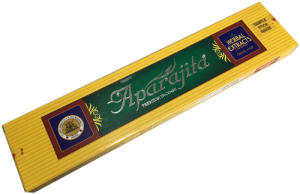
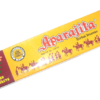

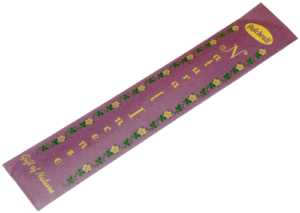
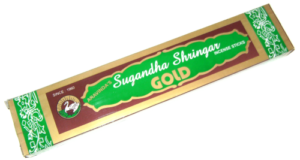
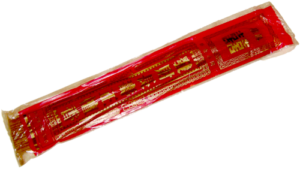
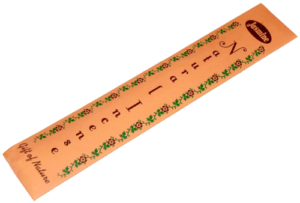


Kyle Harvey (verified owner) –
While initially a little out of my league in its complexity, it has really grown on me with repeated burnings and become one of my absolute favorites. It definitely has a Ayurvedic medicinal quality to it which might broadly be described as herbal, and which I think is what might often be described as pungent, or acrid, to the western nose. There is an ethereal top note that I think I’d pick out as the Olibanum (frankincense), floating spicy, green and fruity, as well as a clean, minty airiness. Below that, I find the patchouli, nagarmotha and clove, which are a subtle, yet deeper spiciness. This is all rounded out and grounded with sweet woodiness that that I’d guess is some combination of sandalwood and benzoin.
With the complexity of Aparajita, the mystery for me becomes whether the durbar element is that which gathers it together in a light, floral fragrance, perhaps a blend of perfume oils. I’m just not sure. There is a floral element that is absolutely ever-present, but I can’t figure out if this is something more traditional like a combination of champa, frangipani and berries, or what. I’m just not as good a picking that out.
In the end, I think Aparajita is a beautifully, intoxicating blend that really finds its way into your psyche with repeated burns. I’ve often heard people talk about the psychoactive component of incense, and I think Aparajita, as much as any I’ve tried, has a somewhat compelling psychoactive effect that I can only describe as lifting and offering a feeling of lightness.
It does really well with some space… a big room with open windows, a screened in sun porch or simply outside will counterbalance the big presence and smoke associated with its burn.
salamandir –
Durbar – A characteristic, traditional incense recipe in which the paste of ingredients, which contains no fragrance-producing ingredients, is rolled around the stick and then dipped in a fragrance-producing oil.